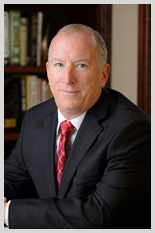Suitable Risk Is The Best Risk
The risk is an integral part of investing and when one lacks an understanding of the costs and benefits associated with risks, they are challenging their own prosperity. As an investor, one must have a complete outlook on risk in order to understand the impact it will have on them, both in the present and the future.
Investment managers typically classify a client as either a “moderately risky” investor or a “highly conservative” investor. Although these labels derive from our human tendency to categorize, they are ambiguous as our reactions and expectations cannot be classified into a single label. Would you want to sell if your investments lost 10%? Do you expect 10% returns every year? The answer to these questions are not mutually exclusive, therefore an experienced investment manager will use the difference between reaction and expectations to guide them in choosing your investments. These two questions, however, do not paint a complete picture of your risk tolerance.
One should also take into account mental health when deciding the amount of risk they want to take on. You, for example, might want a return of 7% but are not willing to stomach the price fluctuations associated with it. If movements as tiny as 1% in your portfolio concern you, reducing risk would benefit you for unique reasons unrelated to price movements. For one, you will eliminate the stress from constantly checking your balance. Additionally, you will avoid rash decisions like liquidating your investments in anticipation of the next crash. Expected returns will be lower with lower risk, so your expectations must diminish as well. It is important to recognize if you have a small risk tolerance so you can avoid potential costs associated with rash decisions, which can also equate to a large number.
If you, on the other hand, have a higher risk tolerance, you should always be mindful of taking smart risks. Is higher risk good if you’re young? The numbers say yes because you have time on your side. If you save $10,000 per year for the next 30 years starting next year, at a 5% return you will have about $665,000, but at a 7% rate of return, you will have about $995,000. That extra 2% over 30 years makes a healthy difference. If you are willing to take the risk, that extra 2% is worth it to some people. Willingness to take a risk, however, is situational and personal, but time can grow money. The longer the time on the horizon, the less risky your investment should be.
At Fogel Capital Management, we work with you to define your risk tolerance and allocate investments accordingly. We hold our title of fiduciaries to the highest standard, meaning we always put our clients’ interests before our own. The risk is one of many elements we take into account when picking suitable investments for you. For a free portfolio consultation, call us at (772) 223-9686 or come visit us in Downtown Stuart, right on the St. Lucie River.









Leave a Reply
Want to join the discussion?Feel free to contribute!